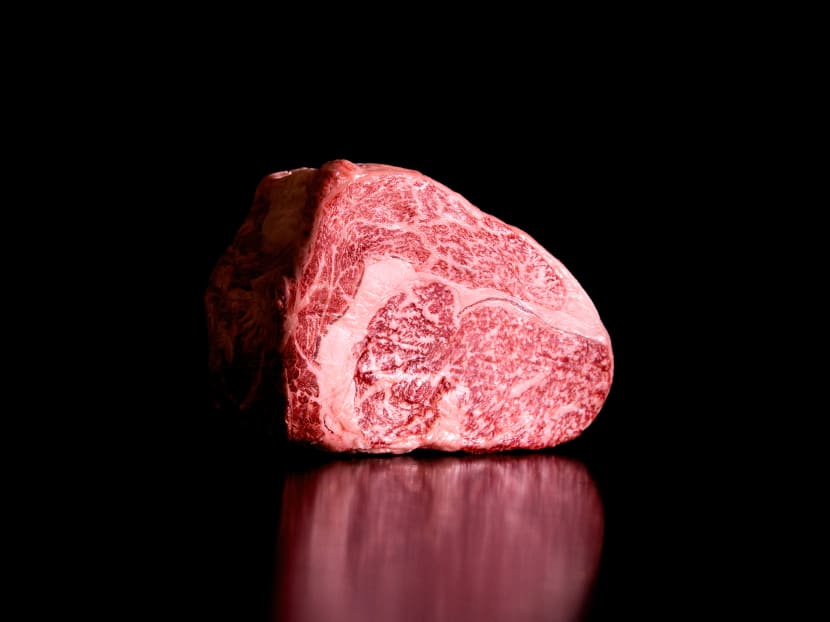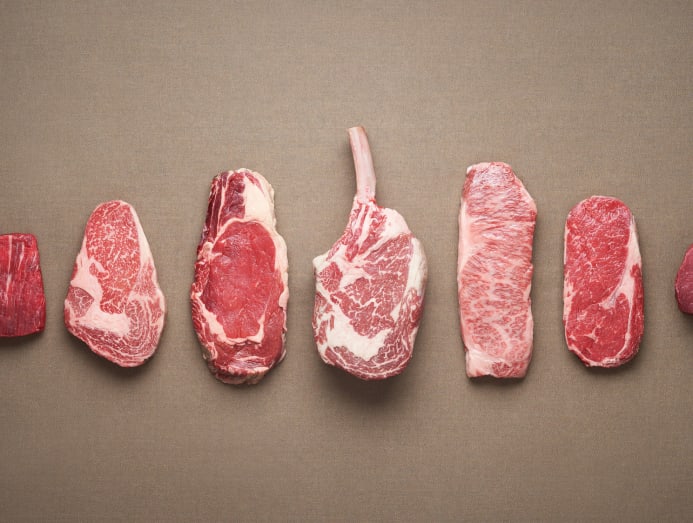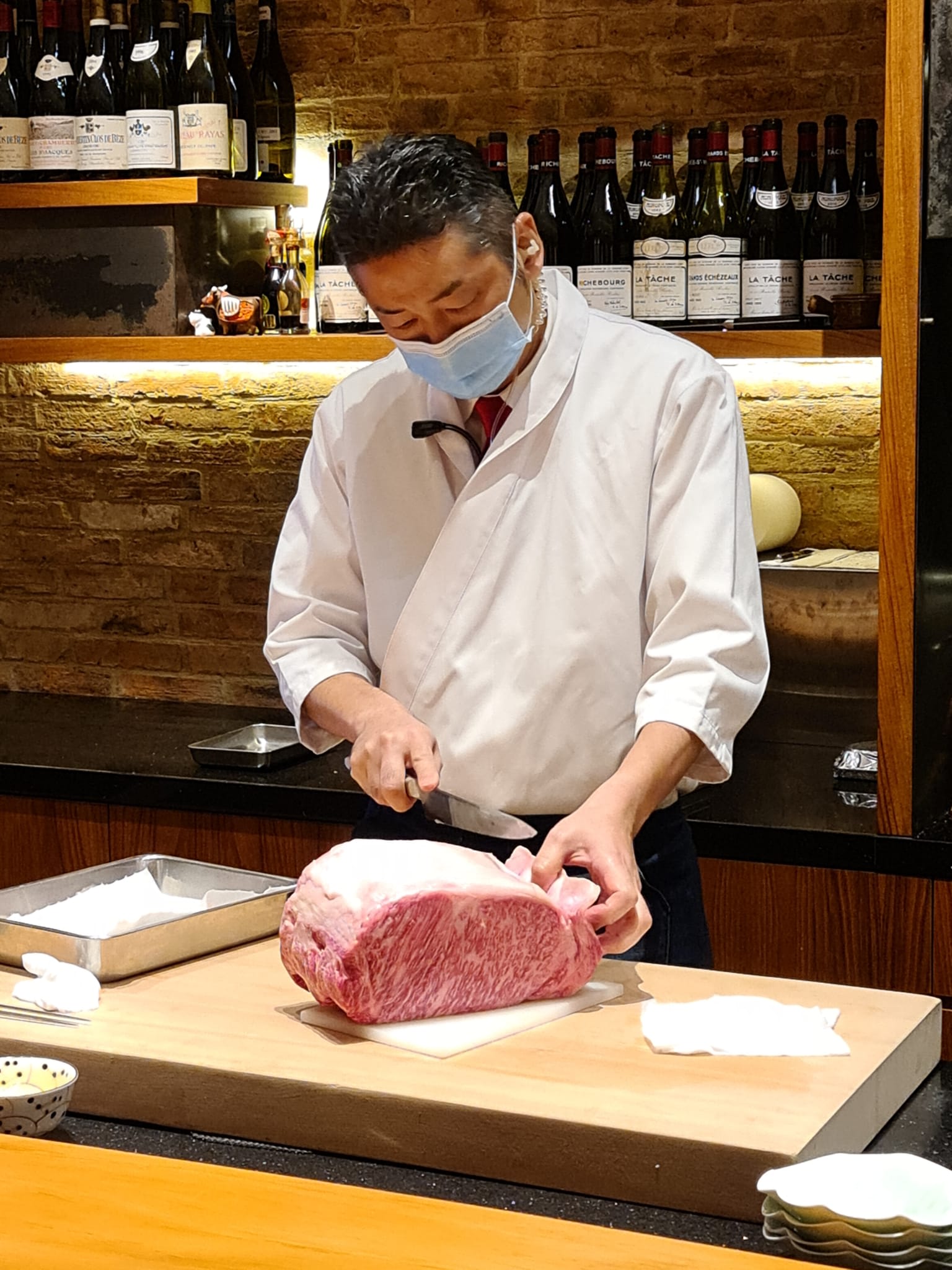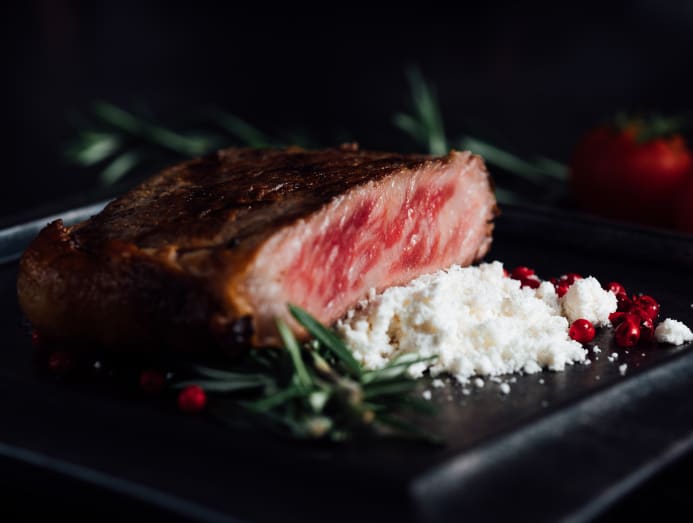What Is Miyazaki Wagyu A5 Beef and Why Is It So Expensive
Advertisement
Experiences
Why is wagyu so expensive? Singapore chefs and restaurateurs explain
Among the key factors determining wagyu prices are the cattle's pedigree, its geographic origins, the farmer's raising techniques, and market demand.

A true appreciation of the varied qualities of the best Japanese wagyu requires an equally keen understanding of its rather complex offering – from the official breeds and brands to their unique breeding programmes, diets and grading system. (Photo: iStock)
20 Sep 2021 06:27AM (Updated: 20 Sep 2021 06:48AM)
Despite its recent introduction in the early 1900s (following the Meiji Restoration), wagyu has quickly evolved from a prohibited protein to a globally coveted luxury food item – famed for its quality beef and exceptionally intense marbling that are the result of precision animal husbandry.
And while there are essentially four breeds of "wa-gyu" (which roughly translates to mean Japanese cow) – namely the Japanese black, brown, poll and shorthorn – a number of prefectural standouts have since earned serious recognition, the most internationally renowned being Kobe beef, derived from the Tajima-gyu from Hyogo Prefecture. It is also said to be one of the hardest to procure outside of Japan; a black cow (kuroge) breed that is produced in notoriously small numbers.
Hyogo is where the Tajima cattle originates, shares Haruyuki Yamashita, executive chef and owner of Hal Yamashita Tokyo, and Syun at Resorts World Sentosa, Singapore. He is also an advisor with both the Japan Association for the World Food Programme, as well as Hyogo Food (under the Hyogo Prefectural Government).
He explained: "Kobe-gyu has to clear strictly set standards and only (a small) percentage can be certified as Kobe-gyu; not all wagyu produced in Kobe can be sold as Kobe-gyu."
In fact, according to the Japan National Tourism Organisation, the country's top three brands – Kobe, Matsusaka and Ohmi – all hail from the region of Kansai. But as Yamashita asserts, not all wagyu are created equal. To wit, he notes that as the popularity of top wagyu is still on the rise in key markets like China, Kobe beef has since been dubbed "maboroshi no niku" or "dream meat".

The differences are predominantly tied to the geographic origins, like how Hyogo is "blessed with climate, weather and water conditions perfect for breeding cattle". And the local authorities are extremely committed to ensuring the quality and authenticity of the few thousand heads of cattle a year that are certified Kobe beef.
As it is, the pedigree of every cut of Tajima beef can be traced via a 10-digit identification number. But only cattle that meet extremely specific grades of quality, including a marbling index of at least six, can be certified as Kobe beef. This is consequently reflected in the price it fetches, which can be as high as 10 million yen (S$122,000) for a single animal, said Yamashita.
He added: "There have been cases where due to its popularity, the price is inflated through the distribution chain, (resulting) in prices being too high. But in my opinion, at the point of auction, it is worth the price."
Each cut, he explains, has its merits, making it is hard for him to say which he prefers the most. Regardless, Yamashita does prefer searing the beef on a suitably sized teppan (iron cask) to draw out the sweetness of the moisture and fat. "In recent years, I have also added charcoal grill as one of my [preferred] methods," he shared.

MATURE TASTE
A true appreciation of the varied qualities of the best Japanese wagyu requires an equally keen understanding of its rather complex offering – from the official breeds and brands to their unique breeding programmes, diets and grading system.
But it's also worth noting that top producers such as Ohmi (which uses Japanese black cattle grown in Shiga Prefecture) could also buy calves at an auction from notable sources like Miyazaki, shares Hirohashi Nobuaki, chef-owner of restaurant Ushidoki Wagyu Kaiseki.
These, he explains, are raised until a certain age, generally around 26 to 28 months, and only then certified under the prefecture and brand they have been raised.

This is a common practice, but one farmer has chosen another way to stand out in a crowd of standouts. Raised on his farm in Miyazaki, Muneharu Ozaki's wagyu are not sent to the local agricultural governing body to be graded alongside other wagyu from the area, Nobuaki affirms. Instead, they are branded and marketed under the farmer's own name.
The main reason has to do with the age at which Ozaki's cows are slaughtered. While most wagyu cattle in Japan are slaughtered at around 28 months, Ozaki believes that their flavour continues to improve with age. As such, he continues to feed and care for them up until about 34 months before they are slaughtered.
To boot, he claims that the melting point of the fats in these matured cows are lower than other wagyu.
Naturally, the high cost of raising more matured cows would presumably be the main reason why most other farmers choose not to do the same. But Nobuaki contends that Ozaki's chief inspiration is to raise more richly savoury cattle that are free from antibiotics and growth hormones, with emphasis on celebrating "the real taste of beef" rather than the marbling, colour and fat content. This also means Ozaki can only produce a very limited number, around 50 cattle a month.
To be sure, any top-grade wagyu is worth the hefty price it demands, Nobuaki affirms, and not only if you prefer their richer, fattier cuts. He believes that consumer palates are changing, with more diners preferring the distinct, nuanced flavour of red meat over an intensely fatty steak.
And that is exactly why he is committed to serving Ozaki beef. He added: "[The beef from] younger cows have very nice marbling and melts in your mouth, but they don't have a very strong beef flavour." And this growing appreciation for less fatty expressions of quality Japanese beef, he elaborates, is just as apparent in Japan, where customers and restaurateurs alike are increasingly on the lookout for the akaushi breed (Japanese brown cow) that's prized for its flavoursome red meat than its heavy marbling.
Nobuaki also shared how there are a number of different cuts that he particularly enjoys. "One would surely be the misuji or oyster blade, as well as the chuck roll," he declared, noting as well how he prefers to serve the former as sashimi. There is only a relatively small portion of oyster blade per animal (around 4kg to 5kg) making this a particularly rare cut.
TIME AND TERROIR
There are of course several reasons why wagyu from one prefecture may defer from another. And one key aspect is a unique diet. Wagyu famously boasts high levels of oleic acid (monounsaturated omega-9 fatty acid) and sweet amino acids.
But the Olive Craft Wagyu, available at Shangri-la Singapore's Origin Grill, takes advantage of its home's unique location in Kagawa, Japan, renowned for producing olives. Hailing from Hata Farm, the cattle's olive-rich diet further boost its exceptionally high levels of oleic acid. "And because of this specialised diet, olive-fed beef have a bolder umami flavour with subtle olive aromas, and higher fat marbling which elevates the juiciness of the beef for a melt-in-your-mouth texture," Origin Grill's chef Mitchell Yeo affirmed.

Another proven method of accentuating wagyu's already savoury flavour profile is ageing. At Yen Yakiniku, for instance, diners can choose to have an intentionally older (67 months) Hida Hime wagyu striploin (A4) that has been dry-aged in-house for 30 days. Or a 21 days dry-aged Nagasaki A5 wagyu striploin at Fat Cow.
And while ageing is a common practice with a variety of beef, snow-aged full-blood wagyu from Uoshoku Meat in Niigata Prefecture – also available at Origin Grill – is produced using a distinctive, time-honoured technique called yukimuro. This requires the beef to be aged in a snow-covered room at a constant range of temperature ranging between zero and five degrees Celsius for 30 days.
Yeo explained: "What results is beef that yields rich marbling and is extremely tender and moist. As proteins are also broken down by oxygen in the process, free amino acids are released, allowing the meat to develop a pronounced umami flavour, as well as a sweeter, silkier, and richer taste."

Ultimately, the choice wagyu is the one that suits your palate and dining philosophy. "The best for me is one from Saga," said chef Remy Lefebvre of Casa Restaurant, a contemporary woodfire-focused restaurant that celebrates Lefebvre's life journey on a plate. "In my past restaurant experience, I have worked exclusively with Murata-san, a producer that carries the best A5 Wagyu in south Japan. At the time, he exported only one cow a month and it was for us."
More importantly, as a chef, he feels that it is his responsibility to use respectfully sourced, healthy produce with the best flavour. He added: "We spent around 12 months tasting and trying different meats on the market to find one that we felt was the best. We found Altair (from Tasmania, Australia) and have been working with them because we appreciate the fact that they supply free-range, cross-bred wagyu with an exceptional marbling (MBS7) that we now exclusively carry at Casa."

According its website, Altair wagyu is prized for successfully combining "the marbling and sumptuous texture of traditional wagyu with the clean minerality of grass-fed pasture raised cattle". They also rear their cattle for at least 30 months – longer than typical beef programmes.
"The balance of texture between fat and muscle, and the buttery flavour of their grass-fed wagyu is remarkable," shared Lefebvre, who prefers grass-fed beef as it is easier to digest, and that also means diners can enjoy a good quantity (220g on the bone) during their meal without feeling overwhelmed.
His favourite cut, though, is the tongue, which he will be coincidentally serving this month (September), with devil sauce and Sterlet caviar, no less.
Recent Searches
Trending Topics
Source: https://cnaluxury.channelnewsasia.com/experiences/why-wagyu-expensive-190166

0 Response to "What Is Miyazaki Wagyu A5 Beef and Why Is It So Expensive"
Post a Comment